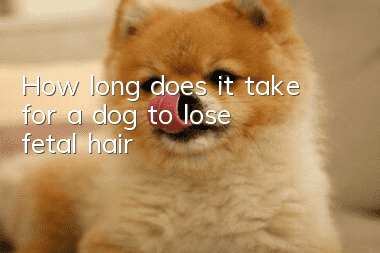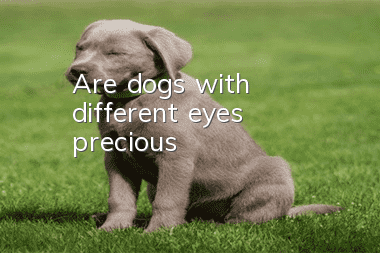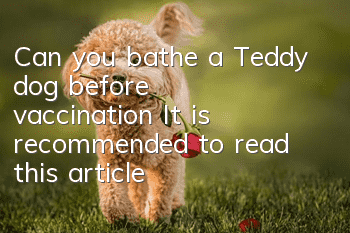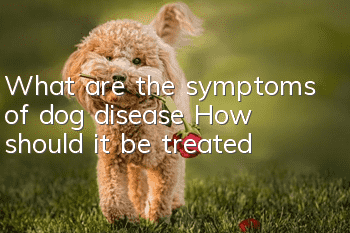How long does it take for a dog to lose fetal hair?

It usually takes about 3-4 months for dogs to lose their lanugo hair. Dogs will start to shed their lanugo hair when they are 3 months old, and it will continue to completely fade away at 6-7 months of age. During the moulting period, owners can feed their dogs some foods with high nutritional value that promote hair growth, such as lecithin, egg yolks, hair beauty powder, B vitamins, etc., which can make the dog's hair soft and shiny. In addition, owners can also use a comb to comb the fallen hair to prevent the dog from licking too much hair and entering the body.
1. Symptoms of dog lanugo hair replacement
The lanugo hair of a puppy is soft and sparse when it is born. It gradually changes to thicker and harder hair in about three months, which is the process of lanugo hair replacement. After the dog replaces its lanugo hair, it will have two seasonal sheddings every year. The two shedding times are mostly in the spring and autumn seasons, that is, around March-May and September-November. Generally, the long hair will be replaced by short hair in spring and summer, and the short hair will be replaced by long hair in autumn to protect against the cold. The shedding usually lasts about a month.
2. How many months does a dog lose its lanugo hair?
Dogs usually start to shed their lanugo hair when they are three or four months old. This is the time when the dog is developing rapidly and changing teeth. The owner needs to provide the dog with sufficient nutrition at this time. You can give the dog canned foods, nutritional pastes, calcium tablets, etc. to help the dog's hair grow better and the dog's health. While growing, the dog should also be combed to prevent the hair from flying around the house.
3. Precautions during the dog’s hair shedding period
During the dog’s hair shedding period, the dog should be provided with sufficient nutrients, such as cooked meat, fish oil, egg yolks and others. Food rich in lecithin to help your dog's hair grow shiny and soft. At the same time, it is also necessary to comb the dog's hair regularly to prevent the dog from licking too much hair into the body to form hair balls, and to clean and disinfect the dog's living environment to keep it clean and tidy.
- What should I do if my Papillon dog loses hair seriously?
- Four methods to help you train your dog
- I am reluctant to neuter my pet. What should I do if my scrotum becomes inflamed?
- Some things to note when raising puppies!
- How to raise Alaskan puppies
- Are Papillons easy to train? Training methods such as forcing, guiding, tempting and encouraging
- Taking your dog out is a few things parents need to know
- How to remove hair in Samoyed
- Methods to train dogs "FCI agility rules"
- Does Erha really recognize his master?



